Sponsor Any Post or Page on the Site. Just Contact Me to Discuss.
How to choose a Weather Station
When buying a weather station for the home, there are several important things to consider:
Accuracy:
The most important feature of any weather station is accuracy. Look for a weather station that provides accurate readings of temperature, humidity, wind speed, and rainfall.
Accuracy is the most important feature of a weather station because accurate weather data is crucial for making informed decisions about outdoor activities, as well as for planning and preparedness in case of severe weather.
Inaccurate data can lead to incorrect decisions and potential danger. For example, if the temperature readings are inaccurate, you might not dress appropriately for the weather, leading to discomfort or even illness.
Similarly, if the wind speed readings are inaccurate, you might not be aware of dangerous winds that could damage your property or cause injury.
Therefore, it is important to choose a weather station with a high level of accuracy to ensure that you have reliable and precise weather information.
Sensors:
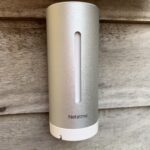 A weather station should have sensors for all the important weather parameters, including temperature, humidity, wind speed and direction, and rainfall.
A weather station should have sensors for all the important weather parameters, including temperature, humidity, wind speed and direction, and rainfall.
Some weather stations may also include sensors for barometric pressure and UV radiation.
Sensors are an essential component of any weather station because they are responsible for collecting data on various weather parameters, such as temperature, humidity, wind speed and direction, and rainfall.
The quality and accuracy of these sensors can significantly impact the overall performance of the weather station. Therefore, it is crucial to choose a weather station with sensors that are reliable, accurate, and able to measure all the important weather parameters.
Having a full suite of sensors for all the key weather parameters allows you to gather a comprehensive picture of the weather conditions in your area.
This information can be used to make informed decisions about outdoor activities, crop irrigation, energy consumption, and many other applications. For example, if you have a garden, you can use the rainfall sensor to determine if your plants need watering.
Additionally, if you are monitoring wind speed and direction, you can determine the best placement for wind turbines or other renewable energy sources.
Therefore, having a complete set of sensors is important to ensure that you have the data necessary to make informed decisions.
Wireless connectivity:
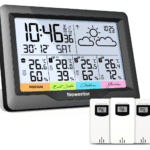 Many weather stations now offer wireless connectivity, allowing you to view weather data from your smartphone, tablet, or computer.
Many weather stations now offer wireless connectivity, allowing you to view weather data from your smartphone, tablet, or computer.
This can be particularly useful if you want to monitor weather conditions when you’re away from home.
Wireless connectivity is an increasingly important feature in weather stations because it allows you to access real-time weather data from anywhere at any time.
With wireless connectivity, you can monitor weather conditions remotely, receive alerts for severe weather, and access historical weather data for analysis and planning purposes.
By using a weather station with wireless connectivity, you can access weather data directly from your smartphone, tablet, or computer.
This can be especially useful if you want to monitor weather conditions when you’re away from home or need to make informed decisions based on the latest weather data.
Additionally, some weather stations with wireless connectivity can even send you alerts when severe weather is approaching, giving you ample time to prepare and take necessary precautions.
Moreover, wireless connectivity also allows you to share weather data with others, such as family members, friends, or even researchers.
By sharing data, you can contribute to a more comprehensive understanding of weather patterns in your area and help improve weather forecasting accuracy.
Therefore, having wireless connectivity in a weather station can provide you with a wealth of useful information and enhance your overall weather monitoring experience.
Display:
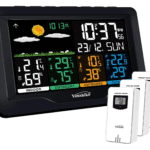 Choose a weather station with a display that is easy to read and provides clear information about the weather.
Choose a weather station with a display that is easy to read and provides clear information about the weather.
Look for a display that is backlit and can be easily read in low-light conditions.
The display is an essential component of a weather station because it provides users with immediate access to critical weather information.
A clear and easy-to-read display is important to ensure that you can quickly and accurately interpret the weather data provided by the weather station.
When selecting a weather station, consider the size of the display, the level of contrast, and the font size and style.
You want to ensure that the display is large enough to be seen from a distance and in low-light conditions. A backlit display is also important to ensure that you can easily read the data in low-light conditions.
Furthermore, the display should provide all the essential weather information, such as temperature, humidity, wind speed, and rainfall, in a clear and easy-to-understand format.
This can be in the form of numerical readings, graphs, or charts. Additionally, some weather stations offer customizable displays, allowing you to choose which weather parameters to display and in what format.
Overall, having a clear and easy-to-read display is important to ensure that you can quickly and accurately access critical weather information.
This is especially important in situations where immediate decisions need to be made based on the weather conditions, such as outdoor activities or severe weather events.
Power source:
Consider the power source of the weather station. Some stations use batteries, while others require an electrical outlet.
Battery-powered stations are often easier to install, but they will require regular battery changes.
The power source of a weather station is an important consideration because it affects the station’s installation, maintenance, and overall reliability.
There are generally two types of power sources for weather stations: battery-powered and electrical outlet-powered.
Battery-powered weather stations are generally easier to install since they do not require a power outlet. They are also portable and can be moved to different locations if needed.
However, battery-powered stations require regular battery replacements, which can be inconvenient and add to the overall cost of owning the weather station.
On the other hand, electrical outlet-powered weather stations offer continuous power, eliminating the need for regular battery replacements.
They also tend to be more reliable since they do not depend on battery life. However, they require a nearby electrical outlet for installation, which can be limiting in terms of placement options.
Therefore, when selecting a weather station, consider the power source that best suits your needs, taking into account the station’s installation location, the frequency of use, and the level of maintenance required.
This will help ensure that you have a reliable and convenient source of weather data over the long term.
Installation:
Look for a weather station that is easy to install and comes with clear instructions. Some weather stations require professional installation, while others can be installed by the homeowner.
The ease of installation of a weather station is an important consideration because it can impact the accessibility and usability of the station.
A weather station that is difficult to install may require professional installation or specialized tools, which can add to the overall cost and complexity of owning the station.
Ideally, a weather station should be easy to install and set up without the need for professional assistance or specialized tools.
This ensures that you can quickly and easily begin using the station to access critical weather data.
In addition, an easy-to-install weather station is typically more accessible, allowing a wider range of users to take advantage of its features and capabilities.
This is especially important for users who may not have specialized knowledge or technical expertise in installing weather stations.
Overall, the ease of installation of a weather station is an important consideration because it can impact the accessibility and usability of the station, as well as the overall cost and complexity of owning the station.
By selecting a weather station that is easy to install and set up, you can ensure that you get the most value from your investment and access critical weather data quickly and easily.
Durability:
The durability of a weather station is an important consideration, especially if you plan to use it in harsh weather conditions or in outdoor environments.
A weather station that is not built to withstand tough weather conditions can easily become damaged or break, rendering it useless.
Weather stations that are designed for durability are typically made from high-quality materials that can withstand extreme weather conditions such as high winds, heavy rain, and extreme temperatures.
Additionally, these stations are often designed with protective features such as weather-resistant housing, corrosion-resistant sensors, and reinforced mounting hardware.
By choosing a weather station that is designed for durability, you can be confident that it will continue to function reliably over the long term, even in harsh weather conditions.
This is especially important if you plan to use the weather station for agricultural, construction, or outdoor recreational activities where accurate weather data is crucial for safety and productivity.
Price:
Weather stations can range in price from under £50 to several hundred dollars. Consider your budget and the features you need before making a purchase.
A more expensive weather station may provide more accurate readings and more features, but it may not be necessary for your needs.
The price of a weather station is an important consideration because it can impact the overall value and affordability of the station.
Generally, weather stations with more features and capabilities tend to be more expensive, while simpler weather stations with fewer features tend to be more affordable.
When considering the price of a weather station, it is important to weigh the cost against the features and capabilities that are most important to you.
A more expensive weather station may offer additional features such as wireless connectivity, greater accuracy, or more durable materials, which may be worth the investment if you require these features.
However, if you only need basic weather information, a less expensive weather station may be more appropriate.
It is also important to consider the long-term cost of owning a weather station. A cheaper weather station may have lower quality components and require more frequent maintenance or replacement, leading to higher costs over time.
A more expensive weather station may have higher quality components that require less maintenance and last longer, leading to lower long-term costs.
Overall, the price of a weather station should be considered in relation to the features and capabilities that are most important to you, as well as the long-term cost of owning and maintaining the station.
By selecting a weather station that offers the right balance of features, capabilities, and affordability, you can ensure that you get the best value for your investment.
- What are the most important things to consider when buying a weather station for the home?
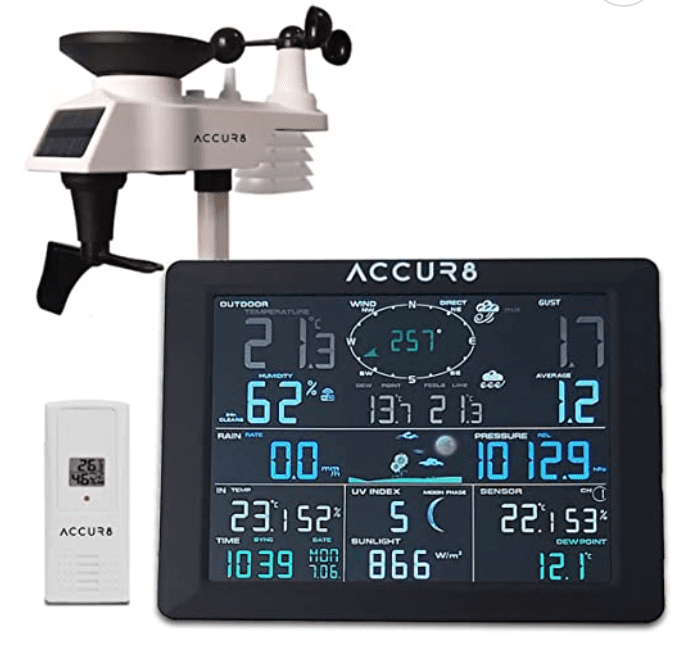 Sponsor Any Post or Page on the Site. Just Contact Me to Discuss. How to choose a Weather Station When buying a weather station for the home, there are several …
Sponsor Any Post or Page on the Site. Just Contact Me to Discuss. How to choose a Weather Station When buying a weather station for the home, there are several … - Occasional Weather Equipment Feature – The Sunshine Recorder
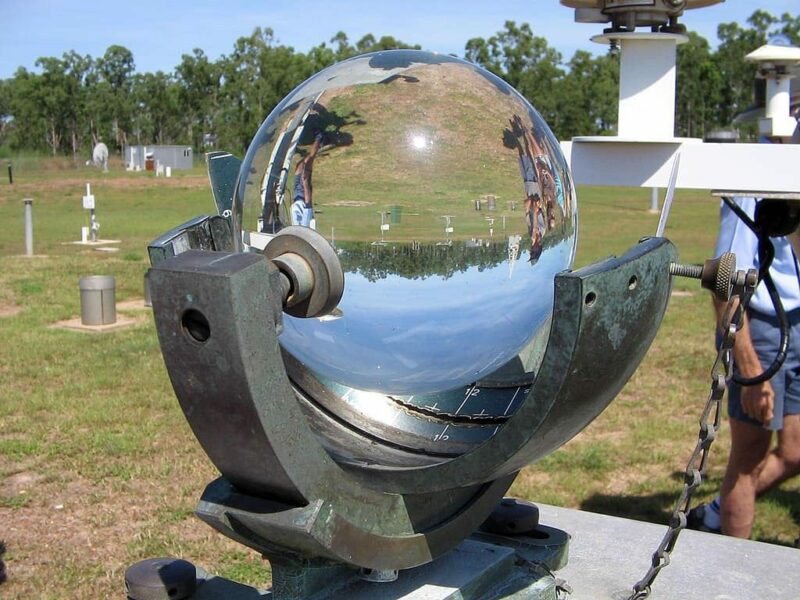 Sponsor Any Post or Page on the Site. Just Contact Me to Discuss. Occasional Weather Equipment Feature – The Campbell-Stokes Sunshine Recorder. This is the Campbell-Stokes Sunshine Recorder. It’s essentially a …
Sponsor Any Post or Page on the Site. Just Contact Me to Discuss. Occasional Weather Equipment Feature – The Campbell-Stokes Sunshine Recorder. This is the Campbell-Stokes Sunshine Recorder. It’s essentially a … - Davis Instruments Vantage Vue 6250 Review
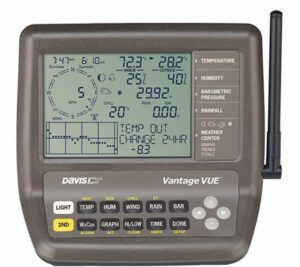 Sponsor Any Post or Page on the Site. Just Contact Me to Discuss. The new Davis Vantage Vue weather station combines Davis’ legendary accuracy and rugged durability into a compact …
Sponsor Any Post or Page on the Site. Just Contact Me to Discuss. The new Davis Vantage Vue weather station combines Davis’ legendary accuracy and rugged durability into a compact …

I have read the article ‘What Are the Most Important Things to Consider When Buying a Weather Station for the Home?’ on Durham UK Weather, and it was very informative. However, I would like to know more about the range of measurement radius for a weather station. What range is considered sufficient to obtain reliable weather data? I’m curious about the relationship between the measurement radius and data accuracy. How wide of a range can a weather station provide to ensure that I receive accurate and up-to-date weather data for my home? Additionally, I would like to understand the importance of considering this parameter when choosing a weather station for home use. I would appreciate detailed information and recommendations from experts to make an informed decision when purchasing a weather station.
Hi Steve,
The range of communication is very important if you want a wireless weather station with outdoor sensors. Today’s cheaper weather stations have enough range to be able to cover most small to medium size gardens. The more professional models have greater range still.
The communications capability makes no difference to the accuracy of the data; either the data is received or it isn’t, it doesn’t become corrupted because of it.
The market leader in professional stations are Davis Vantage Pro2 Weather Station and they are slightly more expensive, but they are used by many professional meteorologists today.
Personally, I have a NetAtmo station which is both accurate and looks stylish in the home.
Third party software can also enhance the data you collect and report.
Weather stations have come a long way. Up to this point, the only ones I had seen were small tabletop displays with a little sensor that goes outside your window. Technology is amazing. It looks like you have given quite a few options that I will explore. I would definitely prefer wireless and I don’t mind price as I typically keep something for years. Durability and quality would be my primary concerns. Thanks for a great article. Brian
Hi Brian, thanks for your comment. You are right, weather stations have come a long way. Even the cheaper units are reliable, if not quite so accurate. My experience is that it’s always worth spending a few extra quid for durability and accuracy. I have owned the market leading Davis kit before. I currently have a NetAtmo station. Youshiko also produce excellent stations too. All of these are available in the Durham Weather Shop
In my opinion, the most important things to consider when buying a weather station for the home are accuracy, ease of use, and connectivity. Based on my experience, having an accurate weather station is crucial for planning outdoor activities and predicting changes in weather patterns. The ease of use is also important, as it ensures that anyone in the household can operate it without difficulty. Lastly, connectivity features allow for real-time updates on weather conditions and remote access to data. However, I have a question: are there any additional features one should consider when choosing a weather station for the home?
Hi Akumendoh,
I think usability is a huge thing and your point about anyone being able to use it is a good one. Sometimes you need people to buy into the usefulness of the weather station as well, and that isn’t possible if it’s impenetrable and difficult to use. Connectivity is important too. I can monitor my own home conditions in a web browser in real time.
Additional features? Well, I like the environmental monitoring side too and the weather station I use (NetAtmo) is capable of measuring noise levels as well as CO2 concentration in the home. This allows you to make sure you aren’t exposed to anything that would affect your health in your own environment.
I run a Serviced Accommodation property and use the station to monitor how much time the guests actually spend there during their stay. Even human breathing can be detected. No cameras or anything to affect personal privacy, but a measure of what i’m offering them as an environment to stay in is vital. I don’t want it too hot or cold, and the humidity levels can affect people too. In short, i use it to make things comfortable for guests.
I must say thank you for this clear and precise advice. I am in the middle of purchasing a weather station for our new home. I have been thinking of needing the assistance of a professional for installation. Thank you for stating clearly that it should be easy to install. And your advice on its accuracy and precision is well appreciated.
Thanks Parameter, glad my advice was useful for you. Let me know which model you choose.
Hey what an interesting post you have here!
I never knew weather stations existed never mind being able to purchase one for the home!
Knowing the weather as accurately as possible is important especially like you have mentioned to avoid illnesses as well as disappointments if there is a trip planned.
I like how the price range does vary however there is an affordable level too!
Thanks again and have a great day!
Thanks for the comment Sariyah.
There are even weather stations available now that monitor things like air quality in the home so you know you’re breathing clean air. They are so much more than just a way of measuring the conventional weather (temp/rain/humidity). If you are considering buying one, I hope my advice helped you.